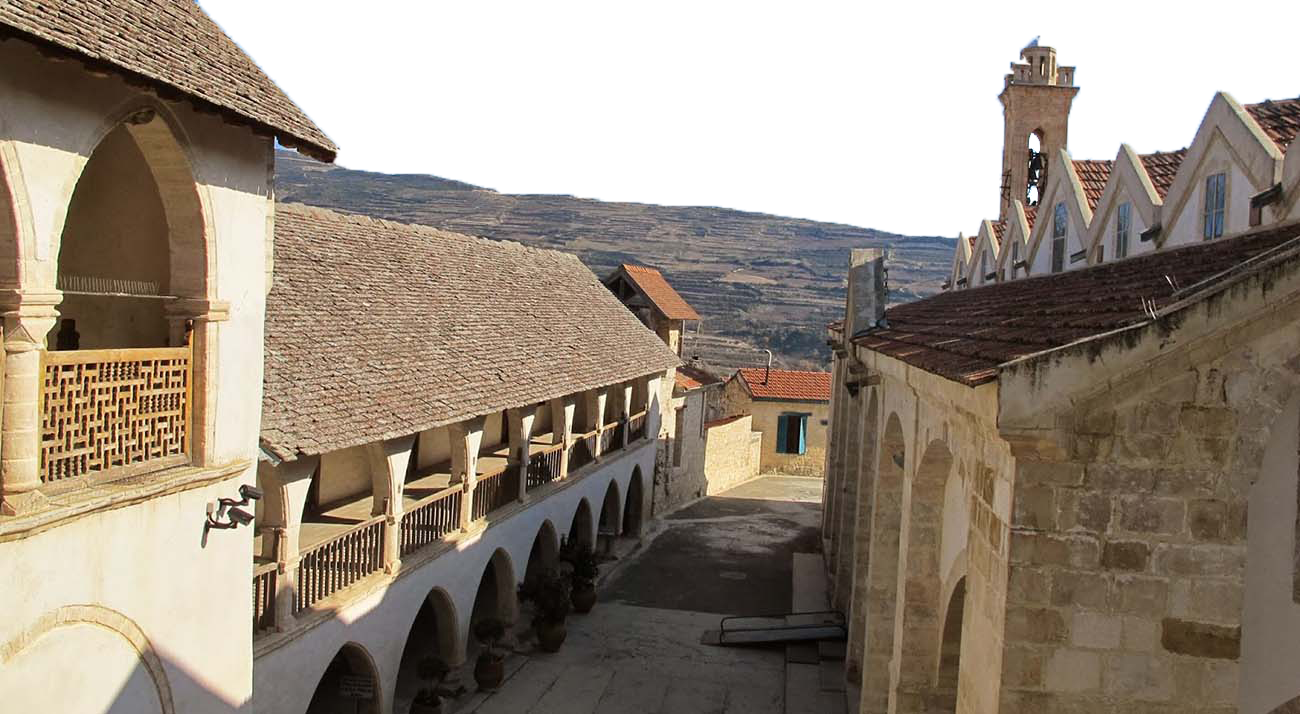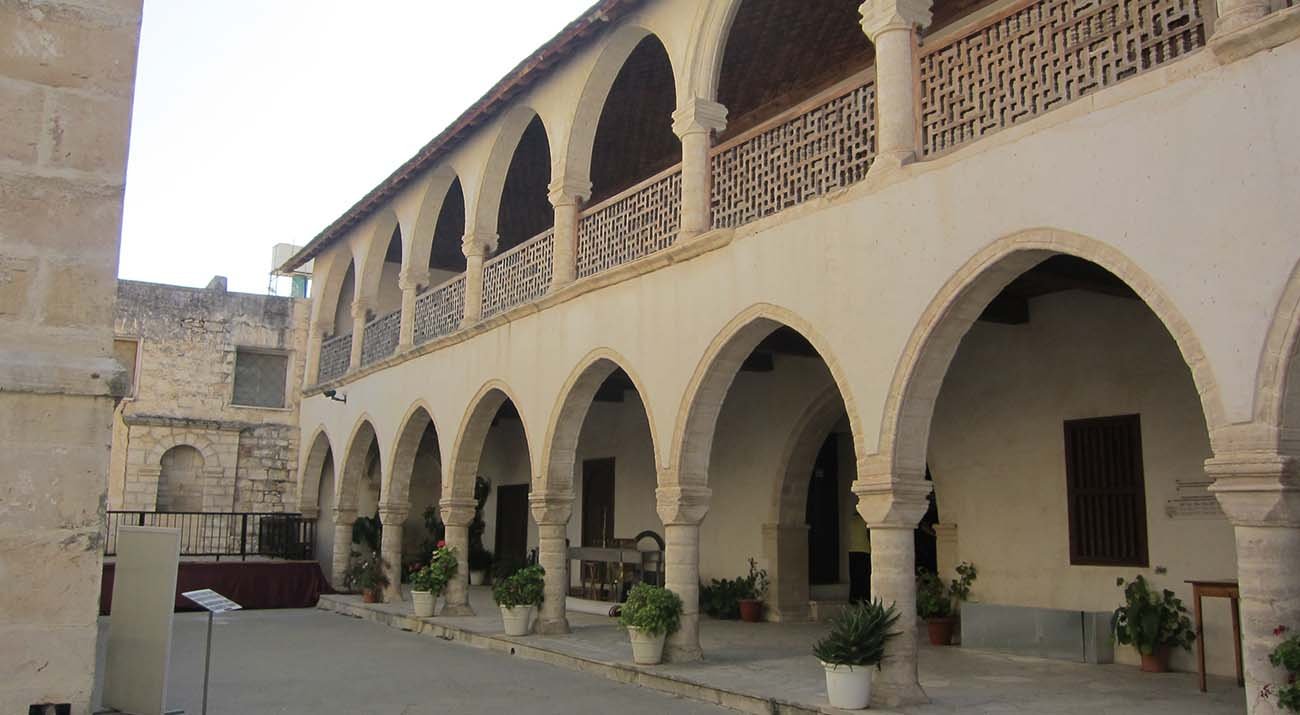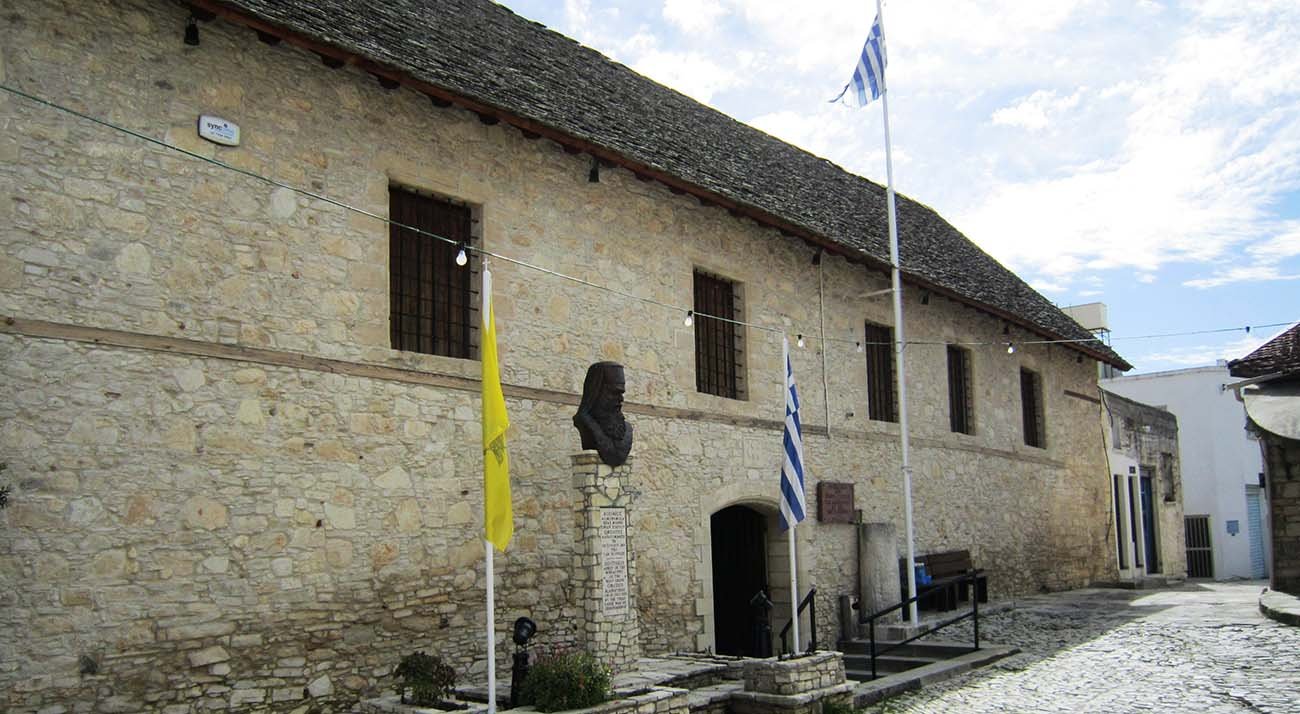
The Timios Stavros Monastery or the Monastery of the Holy Cross at Omodos holds relics taken directly from Golgotha, the site of Jesus Christ’s crucifixion. The most important is the Great Cross with the Holy Rope. The piece of rope was given by St. Helena on her visit in 327-328 AD. A wooden Cross with a gold and silver-plated cover is placed in a special canopy at the iconostasis, bearing various depictions from the life of Christ. At the centre of the Cross, sheltered by a golden wicket that opens, lies the ‘AGIOS CANNAVOS’ (Holy Hemp-made Rope), also called the ‘AGIO SCHINIO’ (Holy Rope), a piece of the rope that the Romans used to fasten Christ upon the Cross and is stained red with His blood. It is the sole existing piece in the world. This church is a wonder of the World where visitors come to pray, asking for miracles related to family issues, health and happiness. Some of the invaluable relics in the Monastery of the Holy Cross at Omodos that have made it renowned throughout the world are:
- A second Cross originally found inside a cave that reportedly ‘encloses the little Cross’. A truly religious find, which is why VIP Tours visit this site as a religious tour.
- The Cross of the ‘Panaretos’ (the all virtuous one). This is the very old Cross of Anogyra kept in the mediaeval monastery of the Holy Cross outside the village Anogyra and transferred to the Monastery of the Holy Cross in Omodos in difficult times, where it still is today, for safekeeping.
- The skull of Apostle Philip, kept in a gold and silver-plated case that is shaped like a pyramid. The authenticity of the skull is verified by the seals of the Byzantine Emperors Theodosius the Great and Heraclius. This Holy Relic of Orthodoxy was transferred to the Holy Temple of the Holy Cross in Omodos around 1788.
- Many other items including holy vessels, remains of 26 Saints, precious jewels and other offerings. There is every likelihood of believers being blessed by the Saints.
- The Monastery of the Holy Cross is one of the oldest monasteries of the island. Its history is fascinating. One night, the inhabitants of the neighbouring villages of Pano (Upper) and Kato (Lower) Koupetra, which do not exist today, observed a fire in some bushes at the area where the monastery stands now. At dawn, they went to the spot where the fire was seen but there was no tell-tale sign. This phenomenon was repeated for several nights. They started to dig, discovering a small cave in which they found the Cross. They constructed a chapel over the cave and kept their precious treasure there. With time the chapel expanded and was converted into a large and rich Monastery, well before St. Helena's arrival in Cyprus in 327 AD. All tours in Cyprus include this site in their agenda.
- After several miracles by the Cross, the Monastery gained substantial reputation and evolved to a great place of adoration. In 1917 the entire property of the monastery was given to Omodos's inhabitants. A few years later it was converted to a parish.
- The Monastery's architecture is characteristic. It is a huge, two-level complex in the shape of (the Greek letter) Π that encircles the church in the north, west, and south with its tall cells and the vaulted arches. It reflects Cyprus’ history.
- Even more remarkable is the Synodicon with its wonderful ceiling and the throne of the Holy Cross, which is chiseled on walnut wood and viewed as a true masterpiece. With the two-headed eagle towering above, the throne also serves as a crypt for the Holy Cross.
- Another remnant of the Golgotha horror is a fragment of a stone, acquired after persistent effort. Despite its background, it is one of the places to see in Cyprus.
Private car with driver for 3 hours
120 euro
Additional hour
25 euro
Cost based on 2-4 Person
Private minibus with driver for 3 hours
220 euro
Additional hour
35 euro
Cost based on 5-8 Person





